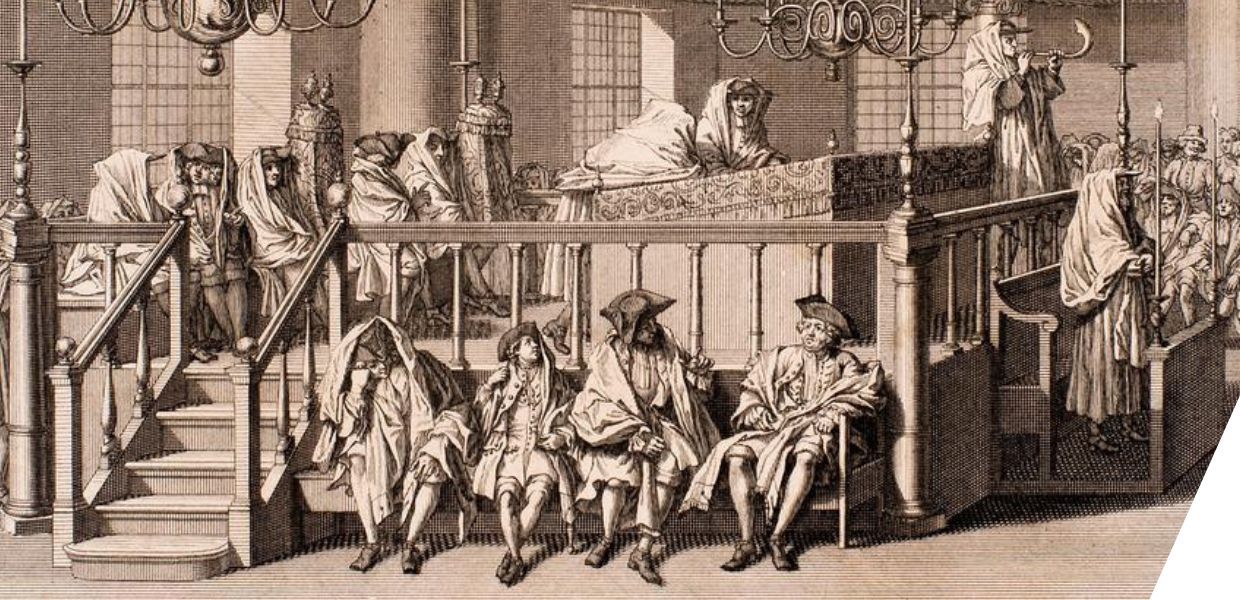About the Jewish History Tours project
Jewish History Tours aims to engage the public with digitised Jewish heritage materials through self-guided audio-tours in different European cities. The project has brought together partners from the cultural and the tourism sectors, who might not normally work together, in order to promote cultural heritage in tourism in a systematic way. The establishment of connections between these groups of people provides an ecosystem around Jewish cultural travel fuelled by a shared purpose. We wanted to learn more about the process of creating and strengthening this ecosystem, and in doing so, how to make it more impactful in the longer-term.
What we did
We used the Europeana Impact Playbook as a resource to help steer our conversation about the impact of digital cultural heritage. To investigate what an ecosystem means generally and what it looks like in the project specifically, we set out two core research questions:
What are the indicators of a (sustainable) digital heritage ecosystem?
To what extent has the project helped to create or strengthen a sustainable ecosystem?
We interviewed partners, observed project meetings and held a brainstorming exercise with over 50 people. Based on the data we collected, we developed 16 sustainability indicators. Indicators are elements that can be measured to help us demonstrate if change has taken place.
What we learned about sustainable ecosystems around digital heritage
The 16 indicators fall into four categories that can help us to plan for and measure a sustainable ecosystem around digital cultural heritage.
Partner experience
An ecosystem is inclusive and partners are positive and proud.
Indicators 1-3:
- Active and enthusiastic participation.
- Members are proud of the result or output.
- The ecosystem is inclusive.
Management
An ecosystem is centrally organised around a common purpose, with plenty of opportunities for formal and informal knowledge sharing as well as moments of serendipity.
Indicators 4-6:
- There is a central organiser.
- There are regular informal opportunities for discussion and knowledge-sharing.
- There is a shared sense of purpose and heritage.
Engagement with digital cultural heritage.
The ecosystem results in something that is easy to use, available in multiple languages and that can be further exploited and built on.
Indicators 7-11:
- The ecosystem develops something that others can replicate within or outside of the same heritage field.
- There are (digital) results for local communities to exploit.
- There is wider awareness of the heritage.
- The created outputs are available in multiple languages and easy to use.
- The project can act as a use case from which to launch discussions with commercial or other partners.
Collaborations and crossovers
There are internal and external cross-domain conversations about longer-term action, signs of new collaborations, and discussions about environmental sustainability.
Indicators 12-16:
- There is future involvement in EU projects.
- There is continued cooperation as well as new collaborations and planned activities after the project end.
- Non-heritage/commercial stakeholders are engaged in discussions about future activities.
- Commercial opportunities, non-commercial support and other funding are available.
- Environmental considerations are a part of the longer-term discussion.
How can you use these indicators in your work?
First, talk with your project partners at an early project stage and plan for your impact. You can map out what you want your project to look like and where you want to be at certain project moments. You can use the indicators to help you create your change pathway (following Phase one of the Impact Playbook).
Second, assess the impact of your project (Phase two of the Impact Playbook). You could add specific measurements (e.g. number and quality of discussions about environmental sustainability) that help you to measure your impact and reflect on your project’s potential sustainability. Here at Europeana we have more work to do to put these indicators into action and we’ll update you when we do.
Get involved
Reach out to the project if you are interested in building sustainable ecosystems for cultural tourism. For more information about all things impact, join the the Europeana Impact Community (via the Europeana Network Association).



